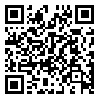Volume 4, Issue 147 (11-2017)
J Except Educ 1396, __(147): 31-40 |
Back to browse issues page
Download citation:
BibTeX | RIS | EndNote | Medlars | ProCite | Reference Manager | RefWorks
Send citation to:



BibTeX | RIS | EndNote | Medlars | ProCite | Reference Manager | RefWorks
Send citation to:
The Effect of Teaching Perceptual-Motion Activities on the Subtle Movement Abilities of Children with Autistic Spectrum Disorders. J Except Educ 2017; 4 (147) :31-40
URL: http://exceptionaleducation.ir/article-1-1113-en.html
URL: http://exceptionaleducation.ir/article-1-1113-en.html
Abstract: (4828 Views)
Background: The prevalence of autism spectrum disorders has increased dramatically over the past decades. In fact, autism spectrum disorders are currently among the most prevalent disability in the United States, according to the latest statistics, in each of the 68 children, 1 has been diagnosed with a disorder. The purpose of this study was to investigate the effect of teaching perceptual-motor activities on the delicate motor abilities of children with autism spectrum disorder.
Method: This is an experimental study with pre-test and post-test test using the control group. The statistical population of this study includes all children with autism spectrum disorder in Mashhad. In this research, a goal-based sampling method is used. In this study, 30 children aged 12-7 years with moderate performance were selected from among children with autism spectrum disorder and randomly divided into two groups (15 subjects) and control (15 people). The children's condition was assessed by using Lincoln Oseretsky's motor development questionnaire and before the implementation of the program; no significant difference was confirmed in the two groups. Then, the students of the experimental group participated in 12 sessions of cognitive-motor activity training sessions for 12 minutes. Then, a post-test was performed and the results were analyzed using SPSS software and independent T-test and covariance analysis.
Results: The results of covariance analysis showed that the difference between the two experimental and control groups was significant in terms of elevated motor abilities. Therefore, the teaching of perceptual-motor activities has a positive effect on the subtle motor abilities of children with autism spectrum disorder.
Conclusion: Motor skills in children with autism spectrum disorder can predict understanding and expressive skills as well as playing skills in these children, which is very useful for future interventions and future research. It is important.
Method: This is an experimental study with pre-test and post-test test using the control group. The statistical population of this study includes all children with autism spectrum disorder in Mashhad. In this research, a goal-based sampling method is used. In this study, 30 children aged 12-7 years with moderate performance were selected from among children with autism spectrum disorder and randomly divided into two groups (15 subjects) and control (15 people). The children's condition was assessed by using Lincoln Oseretsky's motor development questionnaire and before the implementation of the program; no significant difference was confirmed in the two groups. Then, the students of the experimental group participated in 12 sessions of cognitive-motor activity training sessions for 12 minutes. Then, a post-test was performed and the results were analyzed using SPSS software and independent T-test and covariance analysis.
Results: The results of covariance analysis showed that the difference between the two experimental and control groups was significant in terms of elevated motor abilities. Therefore, the teaching of perceptual-motor activities has a positive effect on the subtle motor abilities of children with autism spectrum disorder.
Conclusion: Motor skills in children with autism spectrum disorder can predict understanding and expressive skills as well as playing skills in these children, which is very useful for future interventions and future research. It is important.
Type of Study: Original Article |
Subject:
Autism
Received: 2017/Jun/Thu | Revised: 2018/Mar/Sat | Accepted: 2017/Aug/Wed | Published: 2018/Mar/Sun | ePublished: 2018/Mar/Sun
Received: 2017/Jun/Thu | Revised: 2018/Mar/Sat | Accepted: 2017/Aug/Wed | Published: 2018/Mar/Sun | ePublished: 2018/Mar/Sun
| Rights and permissions | |
 |
This work is licensed under a Creative Commons Attribution-NonCommercial 4.0 International License. |


